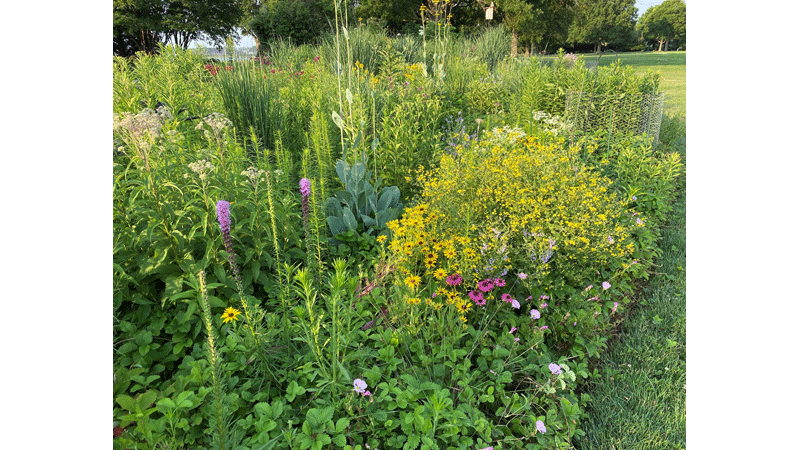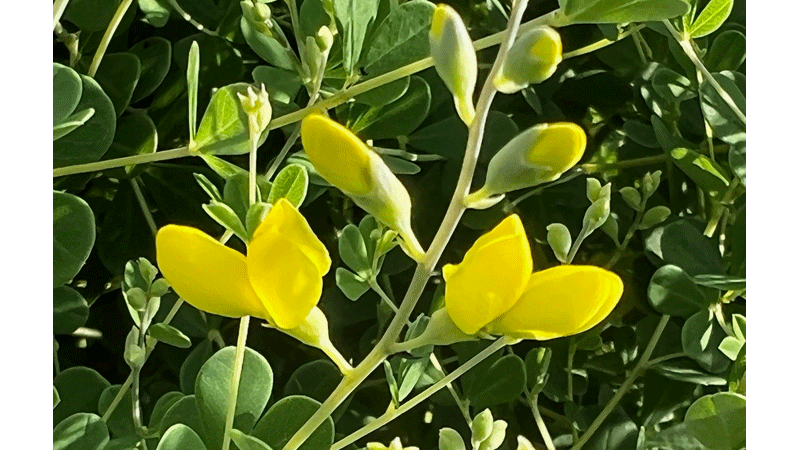Yellow Wild Indigo: beautiful, tough, low maintenance
Published 1:15 pm Tuesday, July 12, 2022
|
Getting your Trinity Audio player ready...
|
By Betsy Washington
One of my favorite Northern Neck native perennials, Yellow Wild Indigo, Baptisia tinctoria, is coming into bloom right now, and its neat, compact habit fits the bill for many requests for low maintenance, small, native plants.
While not technically a woody shrub, this perennial is a long-lived, densely shrubby plant that grows only 2- to 3-feet in height and width, with a neat, mounded habit, almost as if it has been sheared.
In June, clusters of bright yellow pea-like flowers begin to open, blooming for a month or more. While each flower is small, only about half an inch long, these long-lasting flowers are held in 4- to 5-inch long, loose racemes at the ends of the branches and make a wonderful show, literally covering the plant.
By late summer, small inflated green seedpods ripen and turn black in fall. The seeds tend to rattle around inside the puffy pods, giving rise to another common name, Rattleweed. The seedpods add texture and a touch of color to the fall garden. The gray-green foliage itself is quite attractive.
Like other Baptisias, each leaf is divided into three rounded leaflets, much like clover, creating a lovely fine texture that contrasts with that of other garden plants. And, as you may know, this member of the Pea family, like nearly all members, forms a symbiotic relationship with special nitrogen-fixing bacteria that convert atmospheric nitrogen into a form that plants can use, enriching the surrounding soil.
Yellow Wild Indigo is found throughout the eastern U.S. but is uncommon in a few states, however it is common throughout Virginia, where it is found in dry open forests, barrens or roadsides, usually in nutrient poor, sandy or rocky soils. Plants develop an extensive root system and are quite tolerant of drought and poor soils but are difficult to transplant or move. This makes it a wonderful plant for dry sites with poor soils where other plants struggle.
It also performs beautifully in regular garden soils and tolerates both full sun and part shade. Try Yellow Wild Indigo in a pollinator, cottage garden or in a perennial border, where it makes an outstanding “supporting player” to any border, adding great foliage texture and long-lasting showy flowers.
It is also lovely planted in groups and makes an excellent bank cover, preventing erosion with its deep extensive root system and ability to shrug off drought, poor soils and even deer. It grows into a dense, neat mound but loosens up a bit after flowering and can be lightly clipped to maintain its dense habit if seedpods are not desired.
Yellow Wild Indigo is an outstanding pollinator plant supporting bumblebees and hosting caterpillars of several butterfly species, including the Pearl Crescent, Wild Indigo Duskywing, Frosted Elfin and Orange Sulfur butterflies, as well as the caterpillars of various moths and skippers.
Indigenous Americans used the plant for medicinal purposes as an antiseptic for wounds and to treat colds and other maladies, however the plant is poisonous by itself. Native Americans and early colonists used the roots to create a blue dye when the non-native true Indigo was unavailable. In fact, the botanical names of this plant (Baptisia and tinctoria) both mean “to dye.” Yellow Wild Indigo has also been used as a horsefly deterrent and tied to the harnesses of horses and mules, leading to yet other common names — Horsefly weed and Shoofly.
Every year I grow more and more enchanted with this beautiful and tough native plant and plan ways to add more to my garden. Go ahead and add one to your own garden, and I think you will be equally enchanted, as will the pollinators and butterflies.







